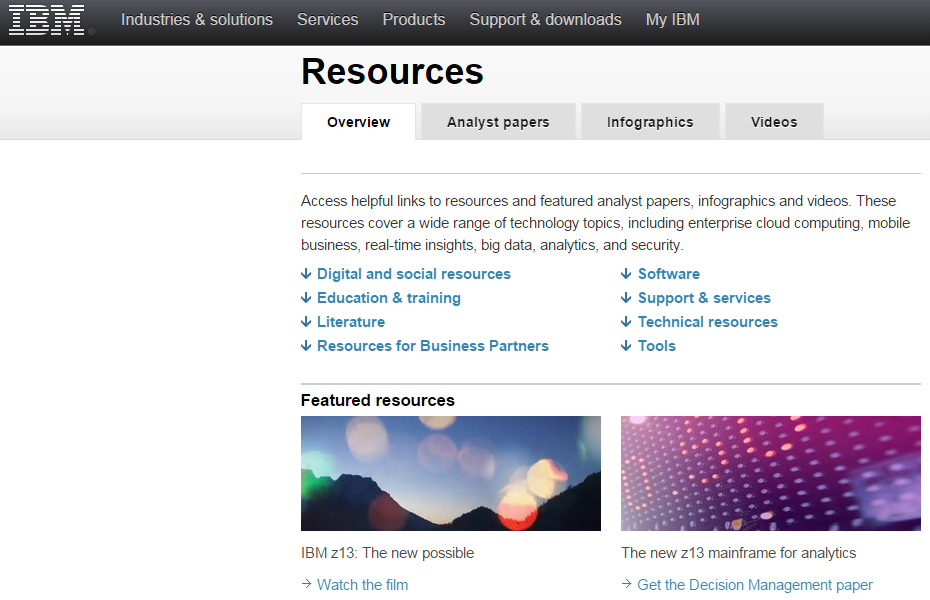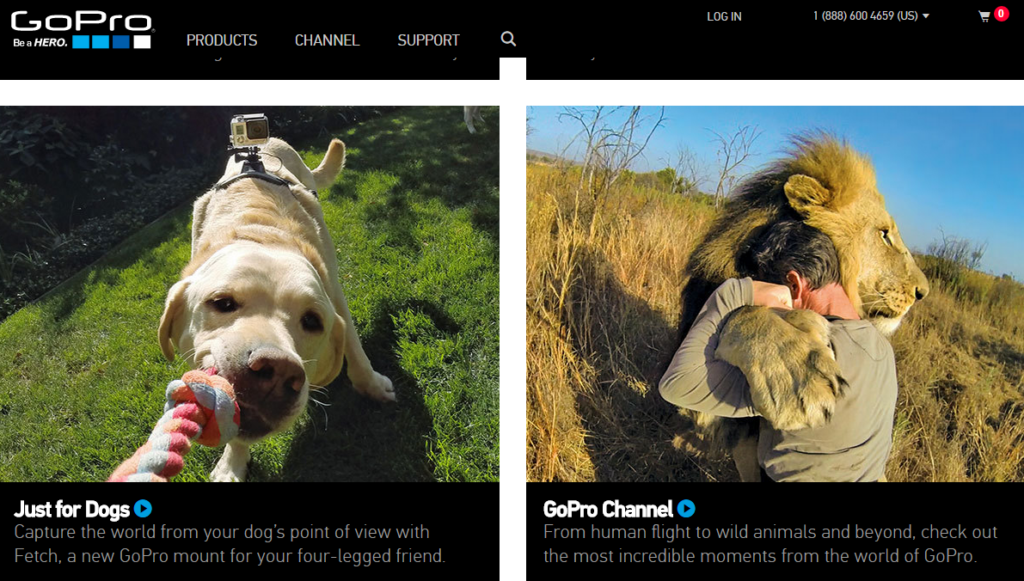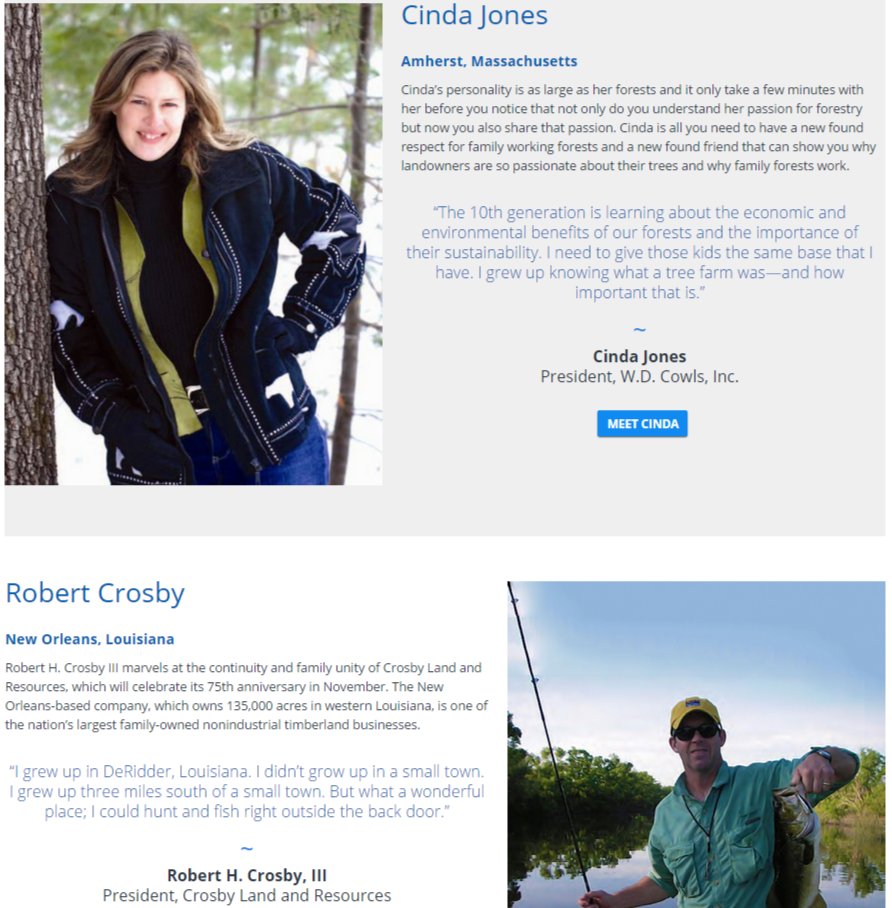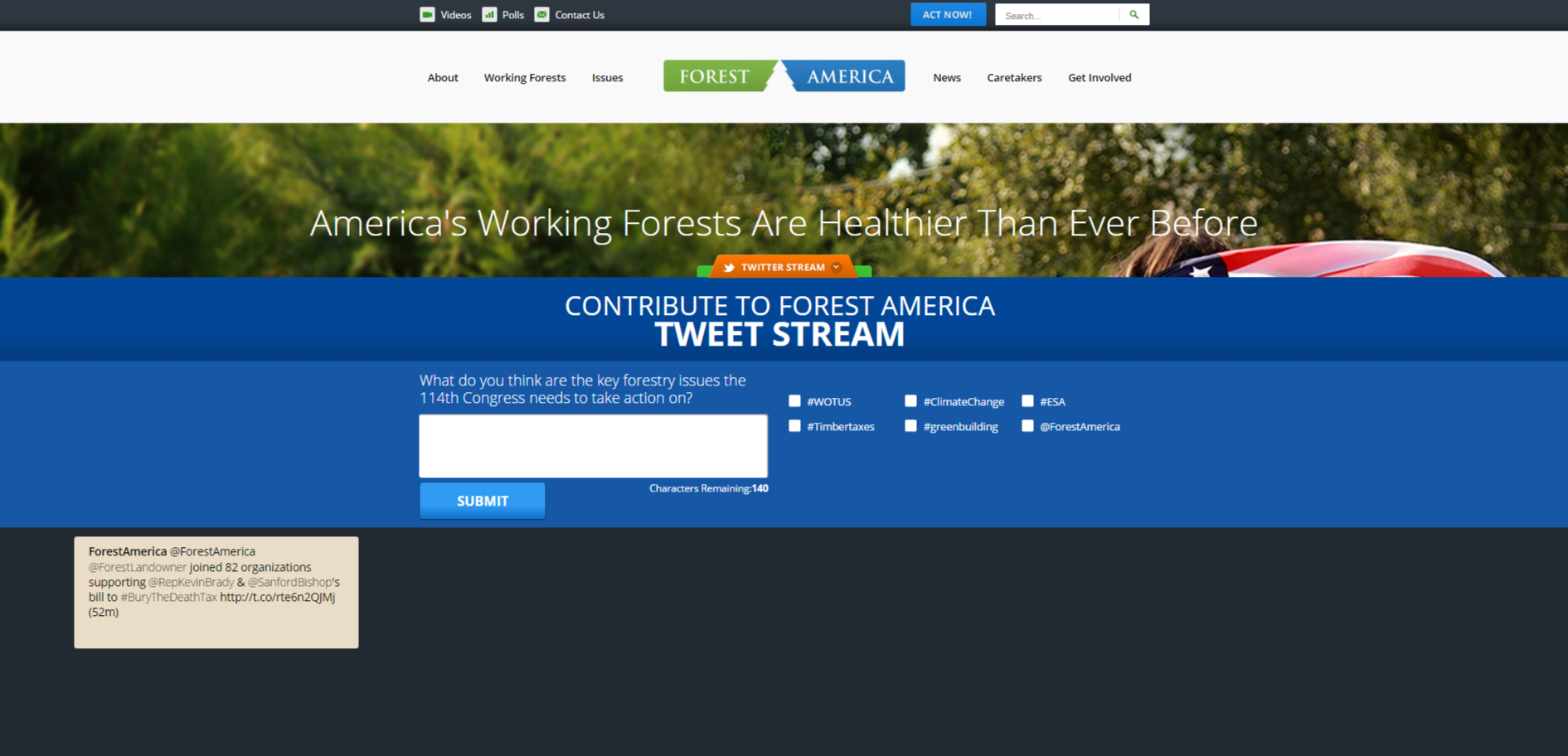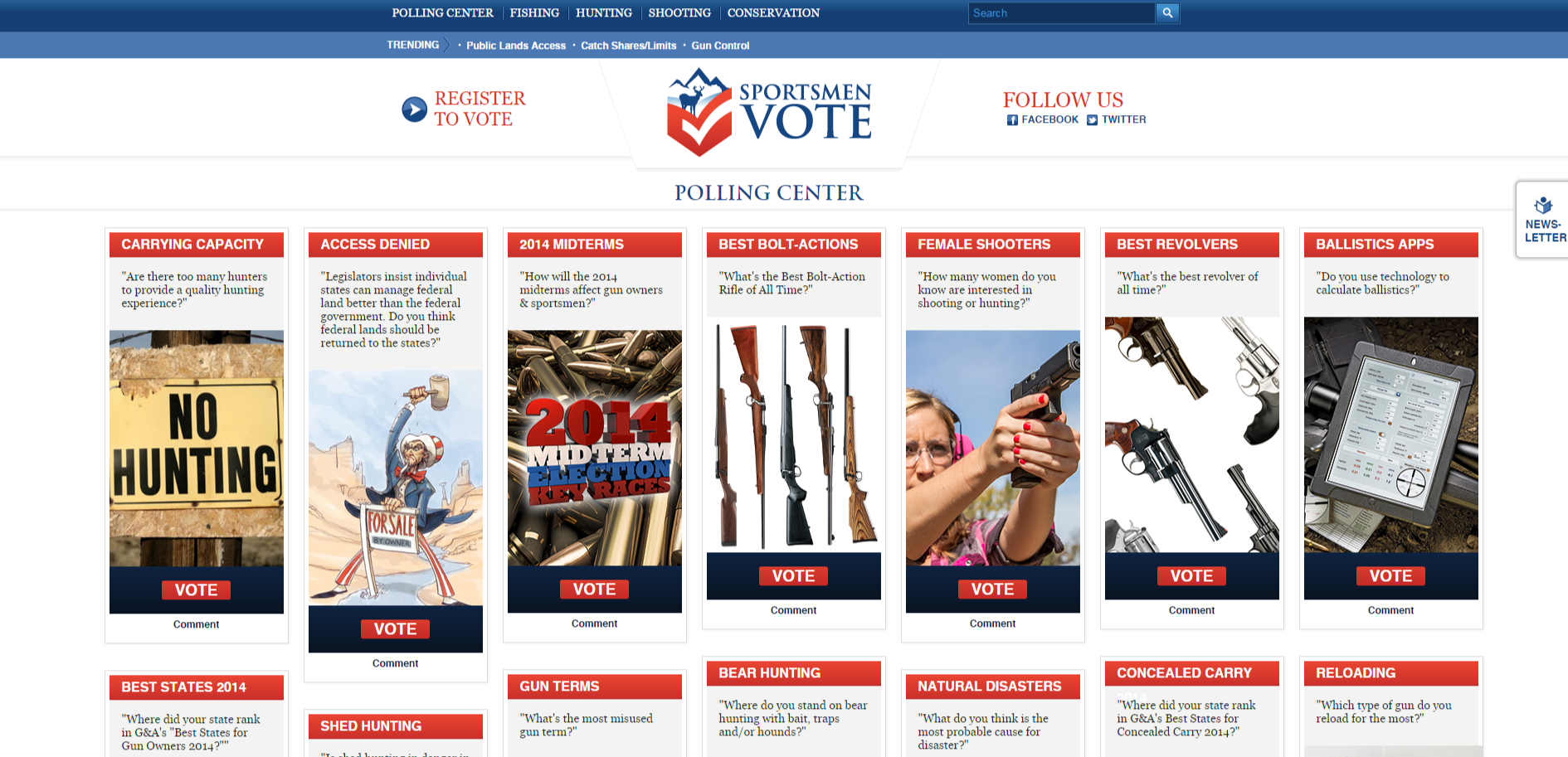The Challenge:
A leading scientific association came to Bluetext with a unique challenge. The association’s goal was to drive higher click-through-rates (CTRs) for its core web properties without altering the front-end design of each site before 2016. Built on a custom, legacy CMS, these sites featured an aged look and were not built responsively. The Bluetext team knew immediately that there was one way to boost traffic to these properties in an effective, long-term fashion that would simultaneously increase conversion rates to purchase, and grow overall engagement with the association’s premium content. Bluetext mapped out a highly-detailed Search Engine Optimization (SEO) Strategy for each of these properties and executed it methodically through the first half of 2015.
Tactics
Our team ran a series of detailed reports on these web properties’ performance in search, analyzing every factor that could possibly be weighing the site down. When assessing SEO rankings, it is key to remember that a website’s “domain authority” is impacted by two main audiences: the search bots crawling the website, and the people searching it and reviewing its content.
Bluetext crafted a multi-phase plan that aimed to improve perceptions of the web properties among both audiences, making sure that any changes made to appeal to crawler bots also suited the needs and expectations of live searchers. Bluetext made recommendations for highly-relevant short and long-tail keywords to include in meta data and content across the site. We then pointed out specific pages on the site that housed meta data (titles, descriptions, URLs) that was too short or too long- and harmed the sites’ search “scores” by breaking structural rules. Bluetext collaborated with the association to rewrite meta data so that it fit Google and Bing’s structural guidelines, and also incorporated keywords that would draw the right searchers to relevant pages, thus boosting overall search authority.
Our next step was to assess website speed and load, and to point out specific tactics to improve these metrics and optimize the user experience. In comparing these web properties to competitors, we found specific referring domains that the client could form relationships with to gain backlinks and grow trustworthiness. Our team explored the client’s social media activity in-depth on platforms that could be used to strengthen relationships with their target audience. We sat with the association’s marketing team and pointed out opportunities to broaden awareness of events and useful materials, and to stimulate engagement among members with posts that ask questions or offer a short piece of valuable information. And since we are a digital design agency and we couldn’t quite help ourselves, we offered design insight on how to effectively rearrange the homepage to improve CTRs to interior pages and display timely, relevant content without drastically changing the current design.
Execution
After receiving a green light from the association to make the recommended changes to their web properties, we got straight to work. Using Google Analytics and Webmaster Tools to identify pages that served as the top 75 “entry points” to the organization’s largest domain, we recreated meta titles and descriptions for these pages so that they fit structural guidelines and utilized keywords that are heavily searched on a monthly basis.
To grow breadth and depth of keyword usage on the sites, our team filled in “Alt Tag” descriptions for images. We looked back at periods where web traffic sharply declined or increased, pinpointing dates when the search algorithm changed and caused these fluctuations. Since the overall quality of a business or association’s Wikipedia profile plays a strong role in search rankings, we combed through the client’s Wikipedia properties and elegantly filled them with high-volume, specific keywords. To draw a closer relationship between the pages across a large site, we created a highly-detailed internal linking strategy that mapped many high-volume keywords on interior pages to particularly relevant interior pages in other areas of the site.
We extended our recommendations to the client’s properties in other countries, identifying ebbs and flows in traffic to these other sites and noting vital changes that should be made to site structures. We also compiled a set of recommendations for the client to manipulate the current mobile design without making major changes so that mobile and tablet users could have a more pleasant user experience.
The Outcome
The time and effort spent by Bluetext to optimize search for this association’s web properties made a drastic impact. Total traffic to the largest site in early June was 13X larger than original average traffic to the site. This same domain saw 12X the number of users visiting the site by early June, alongside a 500% growth in the number of users visiting the property on mobile and tablet devices since project inception. User engagement with website content also increased through project conclusion, with users visiting each page for 20 seconds longer than before. This association is now getting the website CTRs that it deserves with a design that remains almost entirely untouched.
When it comes to where a brand should spend its video ad dollars, YouTube has long been the go-to destination. With more than 3 billion video views per day, content producers direct the majority of its efforts here – and unsurprisingly the advertiser budgets have followed.
But this presumption is being seriously tested by a video traffic explosion – chronicled in great detail by Fortune magazine writer Erin Griffith – underway at Facebook. Facebook users are watching 4 billion video streams a day, which is a 4x jump from just twelve months ago. Granted, Facebook counts a “view” as any video that plays for three seconds, which means that users scrolling down their feed and allowing a video to briefly auto play before moving on inflates the view total. Nonetheless, 4 billion is 4 billion.
Fortune’s Griffith goes into some of the reasons behind social network’s video success – which unsurprisingly includes efforts by engineers to adjust algorithms that make it not only easier to watch videos, but also to share them. While Griffith’s focus is on how all of this impacts advertisers and where they spend their money, Facebook’s rapidly growing impact with video presents a conundrum for B2B and B2G brands and the public relations/marketing firms that represent them.
In evaluating the major social networks and where to focus resources, investment and, most importantly, content, Facebook typically comes up last for firms seeking to influencer decision makers across government and businesses. Sure, everyone is on Facebook, so it goes, but the working assumption is that the largest social network is where you go to view new pics of the grandkids or post updates from the beach – not to consume B2B/B2G focused content.
Griffith’s article supports as much when it comes to videos, with the author pointing out that, “…Facebook’s biggest advantage over YouTube and other video providers may be boredom.” Griffith suggests someone lands on a YouTube video either because they are searching directly for it or a related topic, or a video being shared is ultimately sourced on that site. With Facebook, most of the time we are watching videos because we are killing time on the site and it is just another thing to do.
Because Bluetext works with so many B2G and B2B firms, social media strategy comes up quite a bit. Often, recommendations lean towards LinkedIn, Twitter and YouTube depending on the ultimate goal and category of decision makers the client is trying to reach. Even with B2B and B2G clients for whom we are not supporting social media, Facebook is usually trailing the pack in their social efforts.
But the fact is that Facebook drives one-quarter of all web traffic, and its video traffic explosion demands B2B and B2G firms reevaluate how best to use the site with video content. Is it ideal for placing corporate marketing, event or deeply technical product and service videos? No, absolutely not. But are there times when Facebook, rather than YouTube, should be ground zero for launching a more consumable brand humor video or engaging content that can be easily viewed – and shared – across Facebook and then on to other destinations? 4 billion video streams a day say yes, and going forward B2B and B2G brands may be saying yes as well.
Innovation in content marketing is nothing new, but sometimes it takes well-known brands and how they drive their marketing operations to recognize what’s really valuable. We’ve gathered some top content marketing examples and tips from some of the most recognizable global companies. Some aren’t only about innovation, but rather they show companies sticking to what’s most important about that brand. Others are more on the cutting edge. Here are my four top picks:
1) Pick a strategy that is core to your brand. IBM is known for three key assets: Its technical expertise, its role as long-time market leader, and its position as a respected source of IT information. To match its steady flow of content to its brand attributes IBM follows the same path. To uphold its reputation as a technology leader for more than a century, it has to produce authoritative content that underscores its thought leadership. Because the company is a technical powerhouse, it has to ensure that the content is technically authoritative. And because the company is trusted by millions to provide detailed descriptions of challenges and solutions, it has to make sure that its content is at an expert level. While trying to follow in IBM’s footsteps is not an easy task, it provides a strong lesson for how to approach your content. It should be well-written, possess authority, and have an expert voice. That’s what customers want and respond to.
2) Don’t be boring. This might sound obvious, but with many business-to-business or business-to-government solutions, it’s not always easy to sound interesting on technical topics. Resist the temptation to edit out content that might be fun and relevant, and that plays on popular topics or cultural experiences. Take Hootsuite as an example. There’s nothing very sexy about a tool that allows you to manage your social media posts. It’s mostly a dashboard with a number of useful applications tacked on. But Hootsuite rose to immense popularity by playing off a popular theme, the HBO television series “Game of Thrones.” It created a video called “Game of Social Thrones,” using graphics and music similar to the television show to demonstrate its capabilities. Each popular social platform has its own Game of Thrones city, and logos and images are cleverly used throughout. Timing is everything, of course, and the Hootsuite video garnered lots of buzz on YouTube. Hootsuite also makes sure that its content, even when serious, is fun, increasing its popular appeal. So while your brand or product may be technical and specialized, you can still write content with which your audience will identify on a popular level. The lesson: Don’t feel that you need to be serious all of the time. Create some fun, light content now and then.
3) Tell stories. It’s easy to fall back on technical explanations, and these are often important when conveying the value that a product or solution brings to the market. But telling a human interest story that illustrates what that technology brings to customers can be much more penetrating. Few do this better than Microsoft, whose “Stories” blog posts rarely even include the term software. Instead, they tell stories of how Microsoft technology has helped people, and in some cases changed their lives. In one example featuring sportscaster Daniel Jeremiah, the story is one of the human experience, of triumph, challenge and redemption. Daniel explains how as a scout for the Philadelphia Eagles, when he didn’t trust his instincts and the data at his disposal, he lost the opportunity to push for Seattle Seahawks superstar Russell Wilson. It’s a fun,personal and powerful story, and one that demonstrates Microsoft’s leadership not with a hard sell of its products, but with a tale that will stick in your mind.
4) Go visual. Visual images draw attention, tell a story, and help illustrate a brand’s true value. The problem is, many companies, particularly in the technology space, don’t believe they have much they can show using photos or high-impact graphics. I’m going to put forward GoPro as a great example of a company that relies on the visual to tell it brand story. And yes, I recognize that it’s not a fair comparison—a company that sells action-oriented video equipment of course would have great videos to show off its products. But the thing about GoPro is that it almost never actually shows its cameras in its marketing efforts. Instead, GoPro focuses on its users. One of its leading cameras is called the Hero, and its campaign is to turn its customers into heroes. Much of its content is created by passionate users who are, in turn, becoming public heroes. Companies who aren’t in the video business can take a similar approach. Tell the story of your customers and end users using video and other visual assets to make them the heroes—for the challenges they are addressing and the problems they are solving. At the very least, use visual content and images to enhance your text-based content.
Taking an innovative approach to content marketing can pay off in spades for any brand willing to think creatively and act accordingly. But sticking to some basic truths about what customers want and expect will increase your brand footprint and drive market recognition and share.
Former Eloqua CEO Joy Payne tells Bluetext’s Buzz Lounge that 2015 is the year for sales and marketing to work closely together to fully understand the buyer’s journey in order for marketing to develop the best content for every step of the process. Joe explains that buyers want to facilitate their own journey, and so finding the right content when they need it is essential.
Magellan Federal Vice President Mike Braham talks about what he looked for when selecting the best agency to develop the Magellan Federal brand, and why he chose Bluetext.
Triblio’s CMO and Co-Founder Jason Jue talks about trends in marketing automation, analytics, and digital marketing.
While it might seem like a bad movie plot, websites that aren’t friendly to mobile devices are about to be in for a rude awakening. In late February, one of Google’s top webmasters announced in a blog post that the dominant search engine was about to make a significant change to the way it ranks search results. Beginning on April 21st, its search algorithm would increase the weight it gives when returning search results to what it called “mobile friendliness.” Not only does that mean that mobile-friendly websites would enjoy better results, it also means that sites that don’t meet those standards will face the consequences. Some have already dubbed it “Mobilegeddon.”
The stampede from desktops to the wide variety of shapes and sizes now available as tablets, cell phones and even wearables—think Apple Watch—that has taken place over the past several years is only getting larger. A recent survey by ComScore Networks—a firm that analyzes internet traffic and trends—found that in the final three months of last year, desktop searches in the U.S. decreased, while the searches with smartphones jumped 17 percent. The volume of tablet searches increased 28 percent.
And while many of our clients have made this shift to mobile friendly, they are in the minority. A survey by Didit.com took a look the sites of the largest companies to see if they have adopted a mobile-friendly approach. Didit looked at the home pages of publicly-traded companies on the Standard & Poor’s top 100 list by checking them against Google’s “mobile-friendly test page.” The result—some 25 percent of those home pages failed the test, including the Walt Disney Company, a brand that is typically at the forefront when it comes to leveraging technology for visitors to its theme parks.
The Disney home page looks great on a desktop. But as the screen size gets smaller on table and mobile devices, the Google tool found that the text was too small, the links overlapped each other and the content was often wider than the mobile screen.
We’ve been working with our clients for the past four years to make the move to responsive designs that automatically resize their user interface depending on the size of the display screen. A responsive site takes a standard website and instructs the mobile device on how to display it properly. Responsive websites can handle any resolution with changes in CSS files, which affect how the elements on Web pages are presented. Computers, laptops, smartphones, and tablets will all display the website in the best way possible.
One of the reasons responsive design is so important is the “fat finger” problem—as menus shrink, it becomes nearly impossible to engage the functionality since our fingers are too big. Responsive designs shift the menus from ones that are driven by discreet buttons to larger options that are easier to see and easier to select. Without this type of design, visitors will be frustrated and leave the site in search of one that is user friendly.
This approach insures that the website appropriately presents itself on every size display, from the smallest to the largest. Another approach is to have a separate mobile website. Yet, since new devices in different sizes seem to hit the stores about every 10 minutes, this could be a large problem for websites, and certainly would not be cost-effective.
To put this in perspective, while this is a significant move by Google, it doesn’t mean you have to panic. Some of us have been advising our clients for several years that more and more users are accessing their websites via tablet and mobile devices. Google is simply responding to the shifting trends of how consumers are accessing the web. It will not unduly penalize a website that doesn’t immediately meet its requirements like it did in previous search changes—you can still make the move to a mobile-friendly site and see your rankings adjust accordingly. And if you haven’t been paying attention to the marketplace and to the shifting needs of your audiences, you may have a bigger problem than Mobilegeddon.
Working at a Washington DC digital agency that works with brands spanning the largest, most cautious Fortune 500 companies to the most speedy of start-ups disrupting every corner of Earth, we need to back up our creative and marketing recommendations with stats. Here are some that stats could arm you in your next planning phase, ranging from user experience design to marketing promotion and branding.
WHO ARE YOU BROWSING FOR?
The latest stats are in from the US Government on Browser and device usage. Plan your next website user experience design based on these stats as well as the stats from your analytic application.
WHAT DID THAT ICON SAY?
According to ScienceDaily’s recent study, Icons need to tell something very clearly or face horrible usability issues with your user experience.
The recent report asked users to look at an icon and try to avoid thinking of both the word of that image, as well as how many letters that word had (for example, a subject is told to look at a iPhone and not think “iPhone” or think “6,” the number of letters in the word). Nearly 80% of people could not stop themselves from “sub-speaking” the word in their head and only 50% could stop themselves from saying the number of letters in the word. Stopping the brain from making associations in the subconscious is nearly impossible, which makes it extremely important to ensure that visual icons and representations are completely recognizable and aren’t easily confused by the user to have another meaning.
Placement of icons should not just be for visual effect. It can actually aid your user without making them think at all. It’s important that you choose the right icons as well, because you don’t want to trigger an automatic association from your user about something unrelated to the purpose of the icon.
DO YOU PERSUADE WITH VIDEO?
A recent User Experience Dynamic study by SearchEngineWatch shows that 73% of people will convert to the sites desired action when they enhance their user experience design with video.
HAVE YOU JOURNEYED BELOW THE FOLD?
Countless recent studies are showing that almost every user (yup over 99%!) these days are scrolling below the fold. Be adventurous and think of the user experience taking place on a tall dynamic canvas.
GOT SHARES?
Facebook continues to be the most widely used social channel for sharing. It gained 8.2% share and made up 81% of all shares in Q4. Sharing activity by email also increased, but it still only represents about 1% of total share volume. Looking at the channel distribution of sharing on mobile, Facebook edges out the competition even further. Facebook activity jumped 51% from last year and now represents 85% of mobile sharing activity. Pinterest and Twitter have also gained traction on mobile.
Shana Glenzer, VP of Social Marketing at SocialRadar, talks about how real time location-based marketing is disrupting the retail sector.
Trade associations that represent the interests of and provide services for their members, be they large companies and organizations or individuals, all face the challenge of retaining their current members every year, growing their member base and reaching non-members who may be involved in the policy or business arenas. Competition among associations is fierce. Even without competitive pressures, it’s not always easy to convince individuals, organizations, small business or large corporations to devote resources and pay fees to an industry association year-after-year. They not only have to see the value, they need to feel part of the group and believe that it is looking out for their interests and providing them the services they want.
With industry associations as with other organizations, the website is the hub of activity for members and others who want to know about the group and its issues. Too often, the hub is ignored because it’s not viewed as central to the mission of the group. We think a strong website is essential, because that is the first place that any target audience is going to look for information. Bluetext has helped dozens of industry and membership organizations leverage their web presence to better recruit and retain their members, grow their revenues and maintain a close relationship with their constituents. Here are our top five tips:
Make It Engaging. Compelling website design and graphics are extremely important to reach those key audiences and to keep them interacting with the site. First impressions are important, and if the design doesn’t resonate, the visitor may leave quickly without engaging. A tired or out-of-date design signals that the association may not have the resources or digital savvy to have a modern and fresh look and feel. The design should also allow the visitor to find a wide range of information that spans their interests. Visitors come to association sites not to purchase a specific product, but to learn about a variety of topics, policy issues, and services that are relevant to them. Burying that information under layers of tabs may lose the target audience. A responsive design is a must, as more and more individuals are accessing the sites through mobile and tablet devices. We also recommend longer scrolls as visitors swipe to navigate the screen, rather than waiting for a new page to refresh as they move about the site.
Make It Personal. This should be fairly obvious, but it is surprising how many membership organizations and trade groups fail to highlight their own members. Why is this important? Because individuals need to be able to relate to the other people in the organization, to understand the types of people who are also part of the group and what value they get from their dues. Not only does this draw in new members, but it also serves to “humanize” the organization by putting faces and stories on what otherwise might seem like a faceless group.
We recommend setting up a section on the website that is full of videos and scrapbook-type photos of members and their families. For Forest America, which represents the nation’s private forest owners, we set up a section called “Caretakers” on its website, with profiles of dozens of landowners and their families who are part of the organization. To capture the footage, we take a video crew to their annual meetings and film them during breaks telling their stories—with other family members at their side. We add in photos that they send us and any other materials that help tell a personal story. The Caretakers section serves three important functions:
1) It shows visitors to the site, including policymakers and other organizations, the human faces that comprise the organization;
2) It helps with recruitment, as other private forest landowners see that they can be part of the team; and
3) It energizes current members, who love to see their colleagues and friends—and their own families—in a scrapbook setting.
Give Them The Tools They Need. Members are busy, so any shortcuts that make their lives easier are welcome. For the Society of Human Resource Management, a membership organization that includes thousands of human resources executives, retention was suffering due to the economic downturn. HR directors needed an easy way to convince their CEOs that membership in SHRM paid valuable dividends in training and resources for their annual fees. Rather than their typical request for approval, which might be shuffled to the bottom of the in-box, we built a tool for members that with just a little bit of information would create a compelling brief presentation to be send to their top executives. The deck, which explains the value of joining or renewing their membership, was far more likely to get the attention and approval of the boss. After launching the new tool, SHRM saw its renewals increase dramatically.
Make It Easy. Not only do members appreciate better tools, they need easy ways to take action and interact with the organization. Having persistent Calls-To-Action across every page of the site is essential to get the type of engagement that demonstrates value for the organization. In some cases, those Calls-To-Action can be as simple as “Join Now.” But for advocacy sites, having a sophisticated application built-in that can send a tailored email or letter to a Member of Congress or a regulatory agency serves many purposes.
First and foremost, individuals will contact policymakers only if it’s a relatively simple process. Most do not have the time to write a note to their Congressmen, nor do they know the issues well-enough. In addition, they might have no idea how to find the right policy-maker and obtain their email or physical address. We have installed a number of effective applications for associations that take the burden off of the member. By filling out, for example, their zip code, these tools can auto-populate a letter with the correct Member of Congress and address, and offer a “Mad Lib” draft where certain fields can easily be completed.
Build In Engagement. There are excellent new tools to engage visitors to the site. The first is obvious: Make social sharing persistent on every page and section of the site. Whenever a visitor sees anything they like—a position paper, an infographic, a video or a blog post—encourage them to push that around to their larger network.
Another tool that we have implemented in a number of sites is a Tweet-Builder—a tool that poses a topic and then invites the visit to complete a tweet, with recommended hashtags that can be included. That tweet then goes in real-time into the associations Twitter Stream.
The benefits of this tool are that it encourages the visitor to participate while helping to populate the social media arena. It also gives an incentive for that person to follow the group on social media, and to broadcast posts out to their larger community.
A third tool that we implemented is a polling functionality—that poses questions on the site in the form of polling questions, and then displays the results on that same page. Designed to resemble a Pinterest Page, polling tools invite participation and give the visitor a reason to keep coming back to the site. This is one that we built for a media company that publishes a variety of sportsmen-focused magazines.
